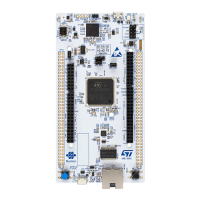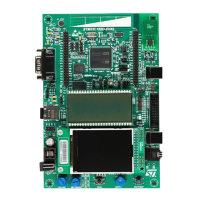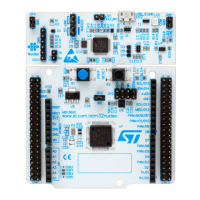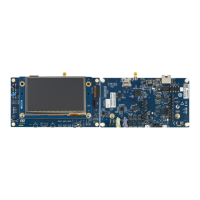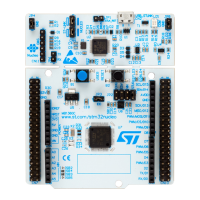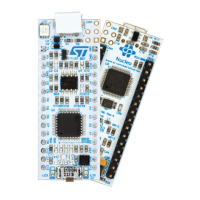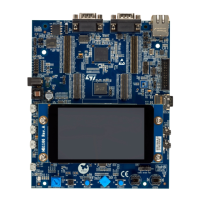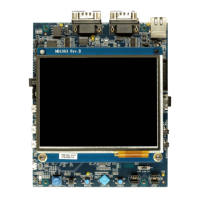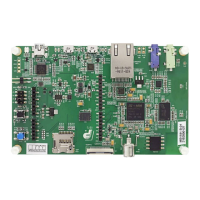6.3.3.2 Using the ST-LINK/V2-1 to program and debug an external STM32 application
It is easy to use the ST-LINK/V2-1 to program the STM32 on an external application.
Simply remove the two jumpers from CN4, as shown in Figure 9, and connect your application to the SWD debug
connector (CN5) according to Table 6.
Note: JP3 T_NRST (target STM32 reset) must be open when CN5 pin 5 is used with an external application.
Figure 9. ST-LINK debugger: JP configuration for external MCU
Table 6. Debug connector SWD: pinning
Connector
Pin number Pin name Signal name STM32 pin Function
SWD CN5
1 1 VDD_TARGET: AIN_1 - VDD from application
2 2 T_JTCK - SWD clock
3 3 GND - Ground
4 4 T_JTMS - SWD data I/O
5 5 T_NRST - Reset of target MCU
6 6 T_SWO - SWD out (optional)
UM2581
Embedded ST-LINK/V2-1
UM2581 - Rev 2
page 14/48
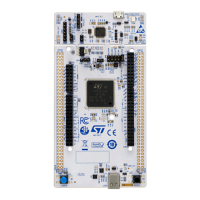
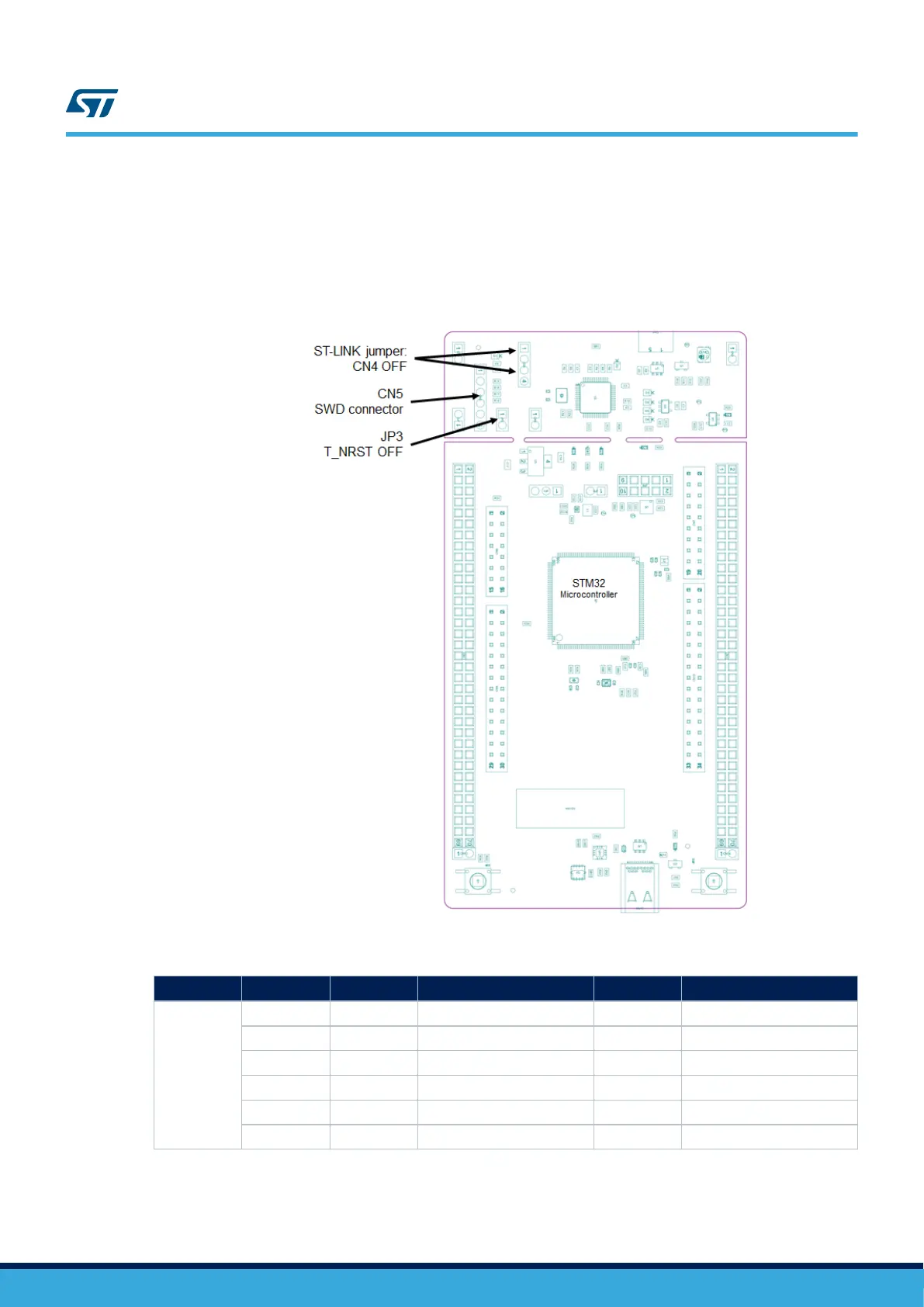